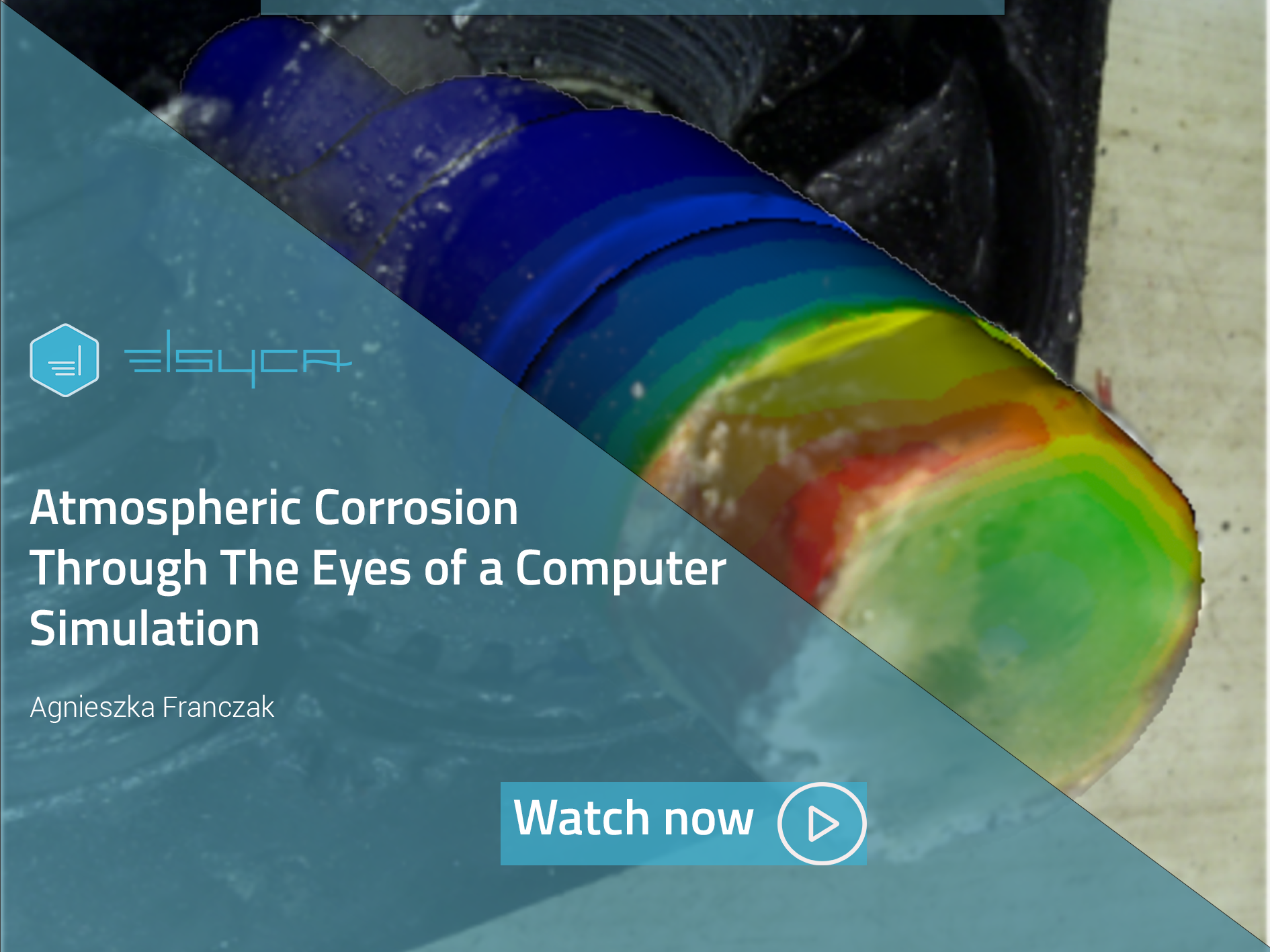
Atmospheric Corrosion Through The Eyes of a Computer Simulation
Corrosion Modeling

Content overview:
The economic impact of corrosion on metallic structures is a matter of great relevance throughout the world. More than half of the considerable damage due to corrosion is a result of atmospheric impacts on materials, which is logical considering that the majority of the metallic equipment and structures operate in an atmospheric environment. A need for better understanding of corrosion processes leads to an increased demand for numerical corrosion models, which become increasingly relevant towards simulation, lifetime predictions and optimization of the corrosion prevention.
In the past, atmospheric corrosion has been modeled based on empirical data and statistical considerations. These models provide fitted functions of the corrosion rate or damage as a function of time for different environmental parameters. Nevertheless, the goodness of fit of the experimental data to proposed models depends on many effects such as frequency, duration, type of wetting and drying cycles, and time of year when exposure was initiated. In many cases, these factors are not even considered.
Thus, it is desirable to develop models based on mechanistic considerations. In this webinar, Agnieszka Franczak, Sales Engineer- Surface Treatment, presents one of such approaches, resulting in the development of a standalone engineering corrosion simulation platform. The ultimate goal of this simulation tool is to predict corrosion risk issues on geometrically challenging and multi-material assemblies prior to their real-life application, taking into account a wide range of factors affecting corrosion severity, e.g. surface area, corrosive environment, temperature, dry/wet cycles, corrosion kinetics, etc.. A step forward has been made, including crevice corrosion simulation that can be used as an input for further evaluation of mechanical properties.
